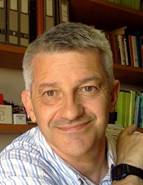Nonlinear wave-particle dynamics in chorus excitation
Venue: Room 201, No. 12 Teaching Building, Yuquan Campus
Speaker: Fulvio Zonca
 Fulvio Zonca is Research Director at the ENEA Research Centre, Frascati, Italy, and Adjunct Professor at the Institute for Fusion Theory and Simulation, Zhejiang University, Hangzhou, China since 2009. At present, he is Principal Investigator of the project Multi-scale Energetic particle Transport in fusion devices (MET), an Enabling Research Project for the implementation of the fusion roadmap by the Consortium EUROfusion. He is Author of more than 150 papers in major international journals and has recently published an extended Reviews of Modern Physics work, together with Professor Liu Chen, on the Physics of Alfvén waves and energetic particles in burning plasmas (RMP 88, 015008, 2016).Fulvio Zonca received his Ph.D. degree in Astrophysical Sciences from Princeton University in 1993 and was employed as Researcher at ENEA-Frascati Research Centre from 1993 till 1997. From 1997 till 2015 he was the Head of the Plasma Physics Theory Group in the Magnetic Fusion Division of the same Institute. He is Fellow of the American Physical Society since 2005 and Member of the Editorial Board of Physics of Plasmas (since 2019), and of Annals of Mathematical Sciences and Applications (since 2015). He is former member of the Editorial Board of Plasma Physics and Controlled Fusion (from 2006 till 2018), and of the EFDA Science and Technology Advisory Committee (from 2007 till 2014). He is also present or former member of a number of University and National Laboratory International Advisory Committees.
Fulvio Zonca is Research Director at the ENEA Research Centre, Frascati, Italy, and Adjunct Professor at the Institute for Fusion Theory and Simulation, Zhejiang University, Hangzhou, China since 2009. At present, he is Principal Investigator of the project Multi-scale Energetic particle Transport in fusion devices (MET), an Enabling Research Project for the implementation of the fusion roadmap by the Consortium EUROfusion. He is Author of more than 150 papers in major international journals and has recently published an extended Reviews of Modern Physics work, together with Professor Liu Chen, on the Physics of Alfvén waves and energetic particles in burning plasmas (RMP 88, 015008, 2016).Fulvio Zonca received his Ph.D. degree in Astrophysical Sciences from Princeton University in 1993 and was employed as Researcher at ENEA-Frascati Research Centre from 1993 till 1997. From 1997 till 2015 he was the Head of the Plasma Physics Theory Group in the Magnetic Fusion Division of the same Institute. He is Fellow of the American Physical Society since 2005 and Member of the Editorial Board of Physics of Plasmas (since 2019), and of Annals of Mathematical Sciences and Applications (since 2015). He is former member of the Editorial Board of Plasma Physics and Controlled Fusion (from 2006 till 2018), and of the EFDA Science and Technology Advisory Committee (from 2007 till 2014). He is also present or former member of a number of University and National Laboratory International Advisory Committees.
Abstract:
The Earth’s radiation belts’ plasma, under certain conditions, can amplify specific types of electromagnetic waves. In particular, the whistler waves, which are electromagnetic fluctuations propagating at less than the non-relativistic electron cyclotron frequency, can occur in ~0.1s bursts with either rising or falling tones and are known as chorus because of their characteristic chirping. Chorus excitation and nonlinear dynamics is one of the long-studied physics problems of Earth’s magnetosphere due to its implications for particle acceleration and distribution in the radiation belts.
Nonlinear wave particle interaction during chorus wave generation has been recently shown to be a non-adiabatic process; that is, the wave-particle trapping time in the resonant phase-space structures, ttr, is typically of the same order as the characteristic nonlinear time scale, tNL. These results shed new light on the physical processes underlying wave-particle resonance and nonlinear mode evolution with respect to previous analyses assuming tNL >>ttr. In this work, we present an analytical study of nonlinear evolution of phase-phase space structures in support of our earlier numerical simulation results, based on a hybrid MHD-fully kinetic description.
We adopt a nonlinear description of the phase-space structures due to the interaction of supra-thermal electrons with the fluctuating fields produced by a quasi-periodic chorus wave. This allows us to derive the renormalized expression of supra-thermal electron distribution function in the form of a Dyson-like equation, which illuminates the self-consistent nonlinear evolution of resonance structures in the phase-space. In particular, we demonstrate that frequency sweeping of chorus fluctuations occurs as consequence of maximization of wave-particle power transfer; and discuss the consequence of this on the spatiotemporal features of the fluctuation spectrum.